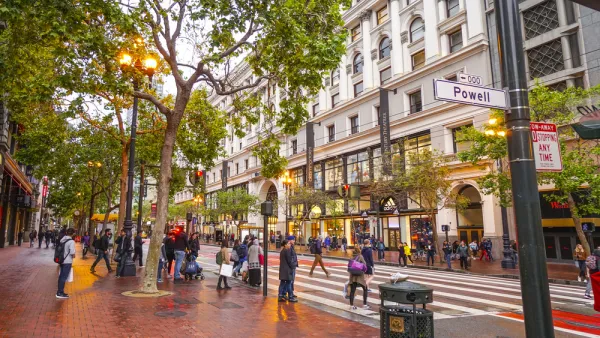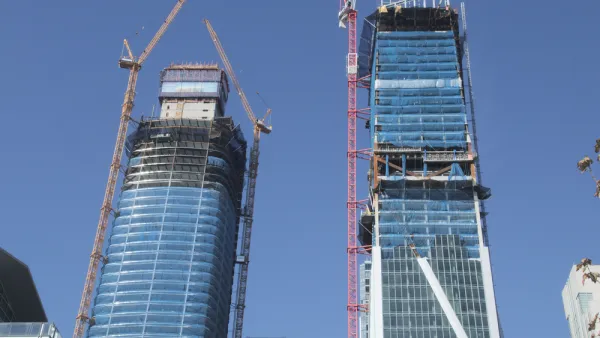With redevelopment funding no longer an option, South San Francisco and other cities increasingly are looking to a community benefits platform, according to Murtaza Baxamusa, a planner and urban planning professor.
The demise of redevelopment has forced cash-strapped cites statewide to come up with more innovative ways to fund projects, with one such strategy involves granting development rights to developers in exchange for providing or funding public benefits.
A fine example of this is South San Francisco, which went through a two-year planning process to come up with a 20-year development plan for downtown that propose 2,400 residential units and 800,000 square feet of commercial and retail space within walking distance of the CalTrain station, writes Murtaza Baxamusa, a planner who develops affordable housing for the San Diego Building Trades Family Housing Corporation and teaches urban planning at the University of Southern California.
Labor, environmental, health, transportation, social justice, and housing organizations in the community came together to give input in the plan, which the South San Francisco City Council adopted earlier this year. While the community benefits approach to planning can be a tough sell in some communities, it’s one that has tremendous value, according to Baxamusa.
”Public accountability for public resources seems like common sense, but is often under attack. This is because a community benefits approach threatens the dominant paradigm in many cities: that of value-free growth (i.e. any development is good). However, a conditional acceptance of growth is not anti-growth, but an affirmation of value-added growth (i.e. any development ought to be good). It expresses astute stewardship of public resources by an educated public that recognizes the economic trade-offs between growth and stagnation, externalization and internalization of costs and benefits, and rent-seeking landlords.”
Other cities are taking notice. Redwood City, San Diego, Menlo Park, and Berkeley all have a growing community benefits movement, he writes.
FULL STORY: How Communities can Benefit from Private Development in California

National Parks Layoffs Will Cause Communities to Lose Billions
Thousands of essential park workers were laid off this week, just before the busy spring break season.

Retro-silient?: America’s First “Eco-burb,” The Woodlands Turns 50
A master-planned community north of Houston offers lessons on green infrastructure and resilient design, but falls short of its founder’s lofty affordability and walkability goals.

Delivering for America Plan Will Downgrade Mail Service in at Least 49.5 Percent of Zip Codes
Republican and Democrat lawmakers criticize the plan for its disproportionate negative impact on rural communities.

Test News Post 1
This is a summary

Test News Headline 46
Test for the image on the front page.

Balancing Bombs and Butterflies: How the National Guard Protects a Rare Species
The National Guard at Fort Indiantown Gap uses GIS technology and land management strategies to balance military training with conservation efforts, ensuring the survival of the rare eastern regal fritillary butterfly.
Urban Design for Planners 1: Software Tools
This six-course series explores essential urban design concepts using open source software and equips planners with the tools they need to participate fully in the urban design process.
Planning for Universal Design
Learn the tools for implementing Universal Design in planning regulations.
EMC Planning Group, Inc.
Planetizen
Planetizen
Mpact (formerly Rail~Volution)
Great Falls Development Authority, Inc.
HUDs Office of Policy Development and Research
NYU Wagner Graduate School of Public Service





























